Withlacoochee River System Update - 12/1/2021
Southwest Florida Water Management District sent this bulletin at 12/01/2021 03:08 PM ESTWithlacoochee River Rises in November; Lakes Hold Steady
Rainfall:
- Over the past month, our region received about 2.5 inches of rain, which is slightly above average (2.0 inches) for November.
- So far this year (Jan – Nov), the District’s northern counties have received about 60 inches of rain.
- This is well above the historical average for the first 11 months of the year (51 inches).
- Some areas have received even greater rainfall this year, including portions of Citrus County which have reported nearly 78 inches in 2021.
- Flow in area springs remains strong due to high aquifer levels from rainfall over the past several months.
- Region-wide aquifer (groundwater) levels are currently in the 89th percentile, well above average and much higher than they were a year ago (62nd percentile).
- The image below shows rainfall totals for 2021. Areas in green and blue have received above average rainfall so far this year.
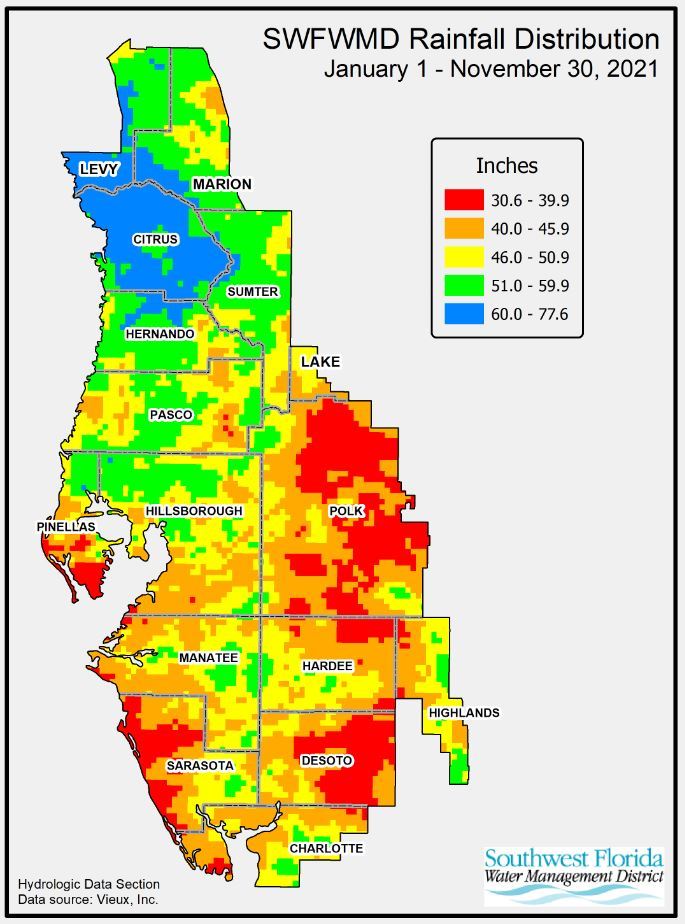
Withlacoochee River (from the Green Swamp downstream past Hwy 200):
- Since late September, river levels and flows had been naturally declining along the entire Withlacoochee River.
- Then in early November, the Green Swamp received 4-5 inches of rain, causing increased flows and higher water levels along the river this past month.
- The river has once again peaked, and flows/levels are slowly dropping again.
- Upstream portions of the river (Green Swamp through Croom State Forest) are lower than they were a year ago, a product of less rainfall overall this year in the Green Swamp.
- Farther downstream (Hwy 48 through Hwy 200) in areas that have received much more rainfall in 2021, the river is currently higher than it was a year ago.
- As our dry season continues for the next several months, river levels and flows are expected to continue to drop.
- Staff continue to work on the MFL study of the Withlacoochee River. This study will evaluate ecological impacts from future groundwater withdrawals in the region.
- The table below compares current river conditions to what they were last month and a year ago.

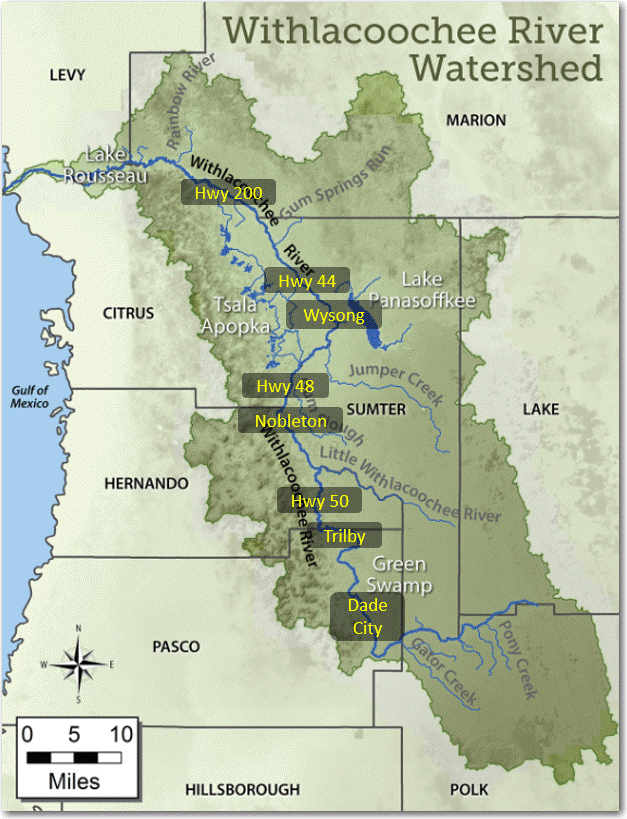
Old boardwalk along the Withlacoochee River near Dunnellon (November 2021)
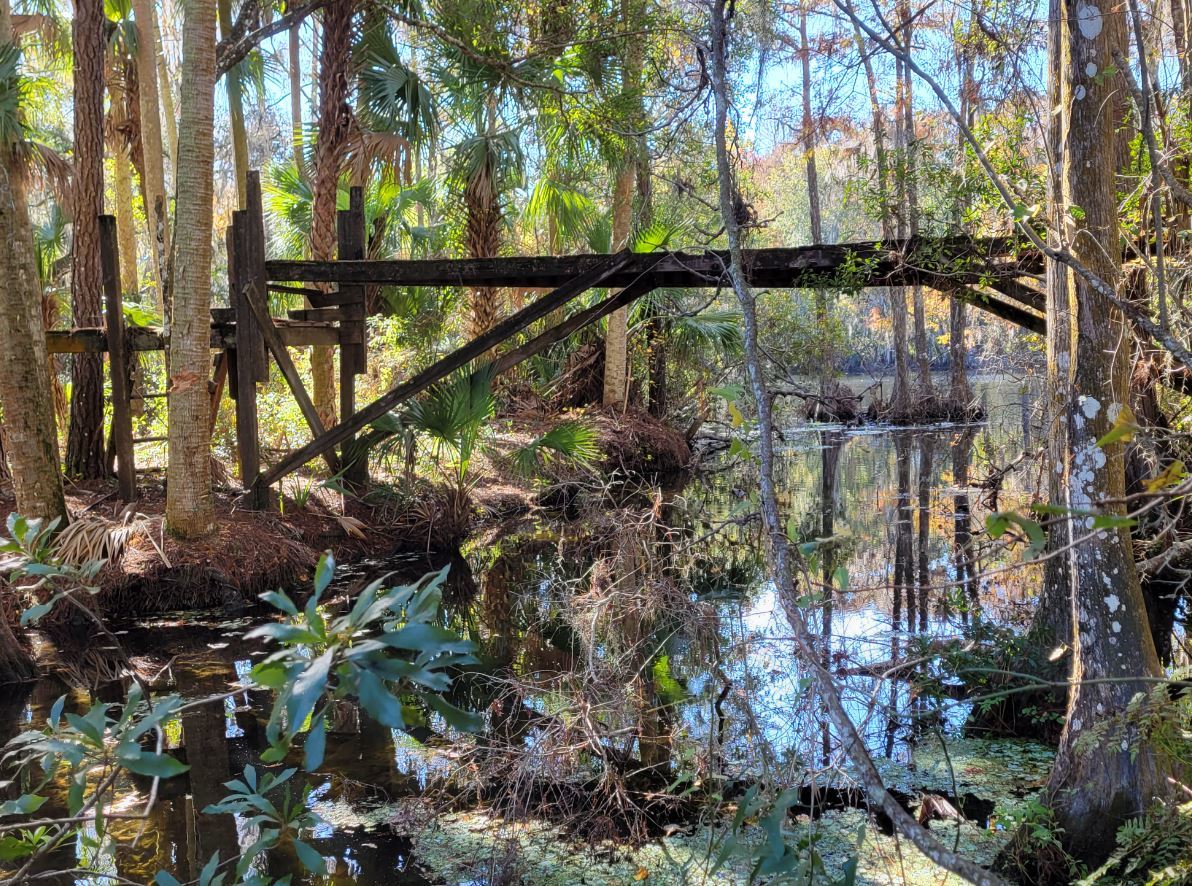
Tsala Apopka Chain of Lakes:
- Lake levels rise and fall each year due to changes in rainfall, flow through several water control structures, and natural losses such as evaporation and downward leakage to the aquifer.
- Over the past month, water levels in the lake chain remained relatively constant, as rainfall in early November cancelled out any net losses.
- High aquifer levels in the region continue to prevent significant seepage downward from the lakes and from many other flooded areas throughout Citrus County.
- Aquifer levels, which reached record highs this September/October, have peaked and are now slowly declining. But they remain very high for this time of year.
- All the water control structures (aka “locks”) remain closed.
- As our dry season continues, water levels are expected to slowly decline.
- Currently, water levels in all three pools of the lake chain are 1-2 inches higher than they were a year ago.
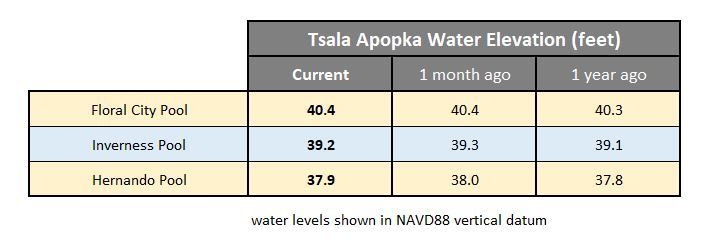
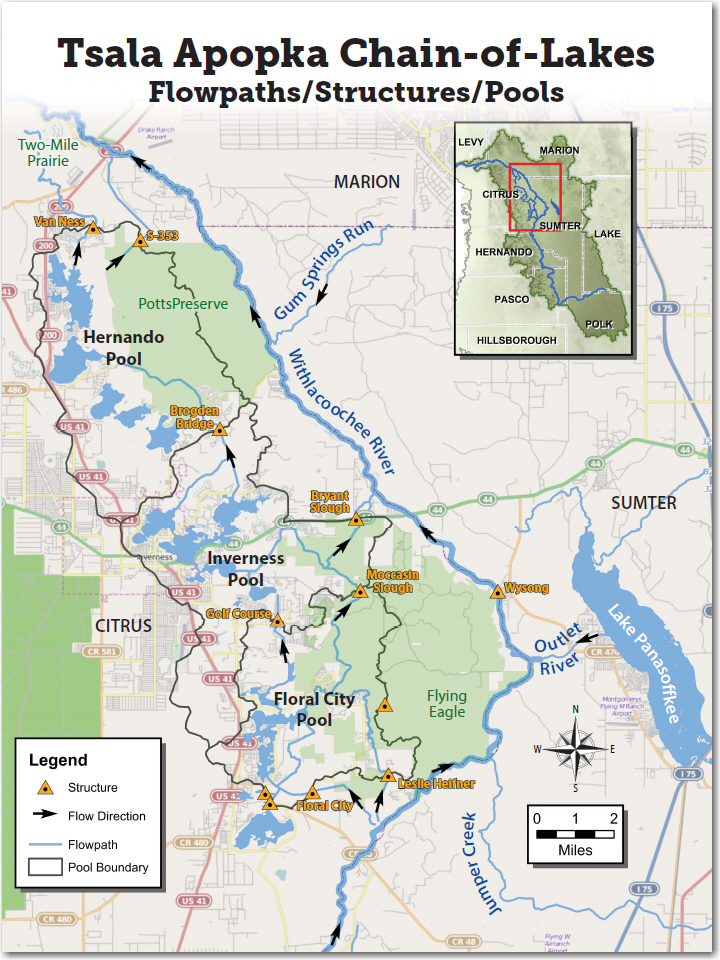
Narrow boat path between lakes in Floral City Pool (November 2021)
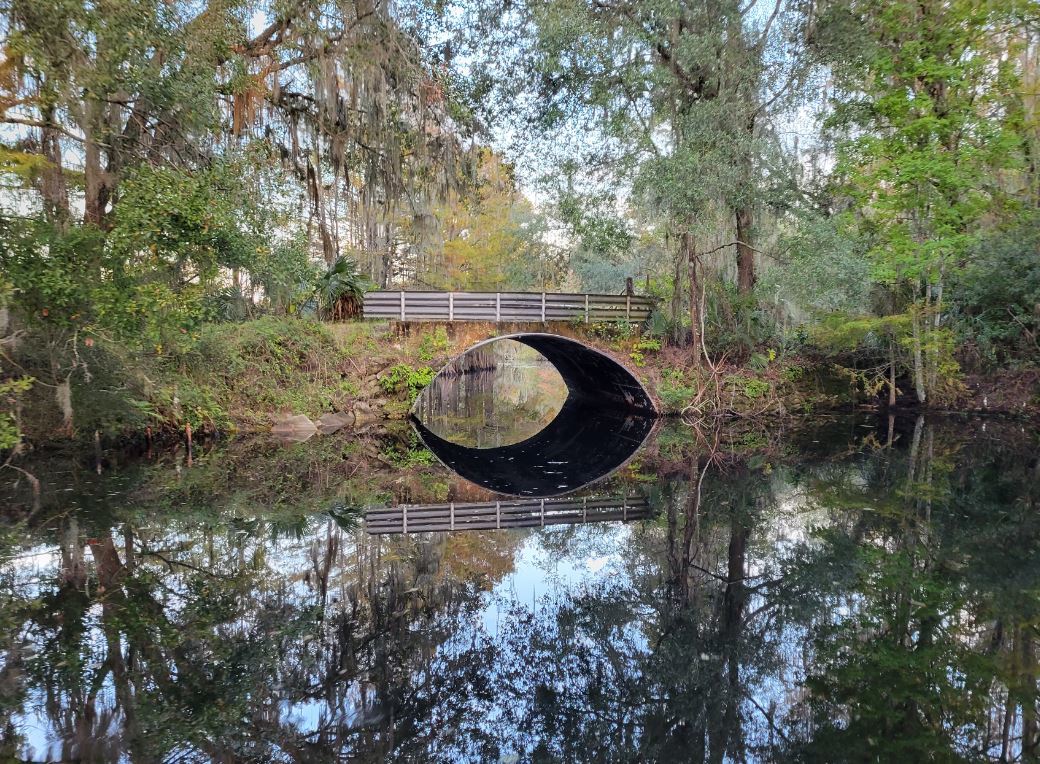
Lake Panasoffkee and Wysong:
- Lake Panasoffkee is a spring-fed lake that receives continuous inflow from Little Jones Creek, Shady Brook, and numerous aquifer connections beneath the lake.
- Water also flows out of the lake year-round, joining the Withlacoochee River upstream of the Wysong water conservation structure.
- In November, lake levels remained relatively constant, with inputs from rainfall balancing the natural declines that occur this time of year.
- Inflows to the lake from Little Jones Creek and Shady Brook have been steadily declining in recent weeks and are 10% lower than they were a month ago.
- Outflows from the lake to the Withlacoochee River have also declined over the past month.
- The main gate of the Wysong structure remains partially raised.
- Lake Panasoffkee is currently about 3 inches lower than it was a year ago.
- Our water quality staff continue to monitor lake clarity after the widespread algae bloom appeared this fall. They report clearer conditions in the middle and northern parts of the lake, which is an improvement from previous weeks.
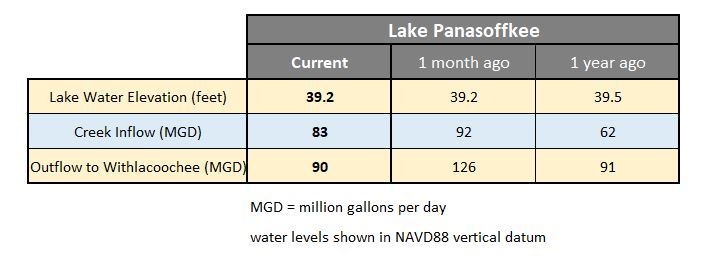
Lake Rousseau and the Lower Withlacoochee River (from Dunnellon to the Gulf of Mexico):
- Downstream from Dunnellon, the Withlacoochee River is influenced by water control structures on Lake Rousseau.
- Inflow to Lake Rousseau includes combined flows from the Withlacoochee and Rainbow Rivers.
- Withlacoochee River flow (which depends on rainfall and runoff from adjacent lands) increased by 10% over the past month.
- Flow in the Rainbow River (which reflects changes in aquifer levels) remained steady over the past month.
- Overall inflows are about 17% higher than they were a year ago, due to higher rainfall in 2021.
- Currently the Rainbow River is contributing 39% of the total flow entering Lake Rousseau.

Inglis Dam releasing excess water from Lake Rousseau (November 2021)
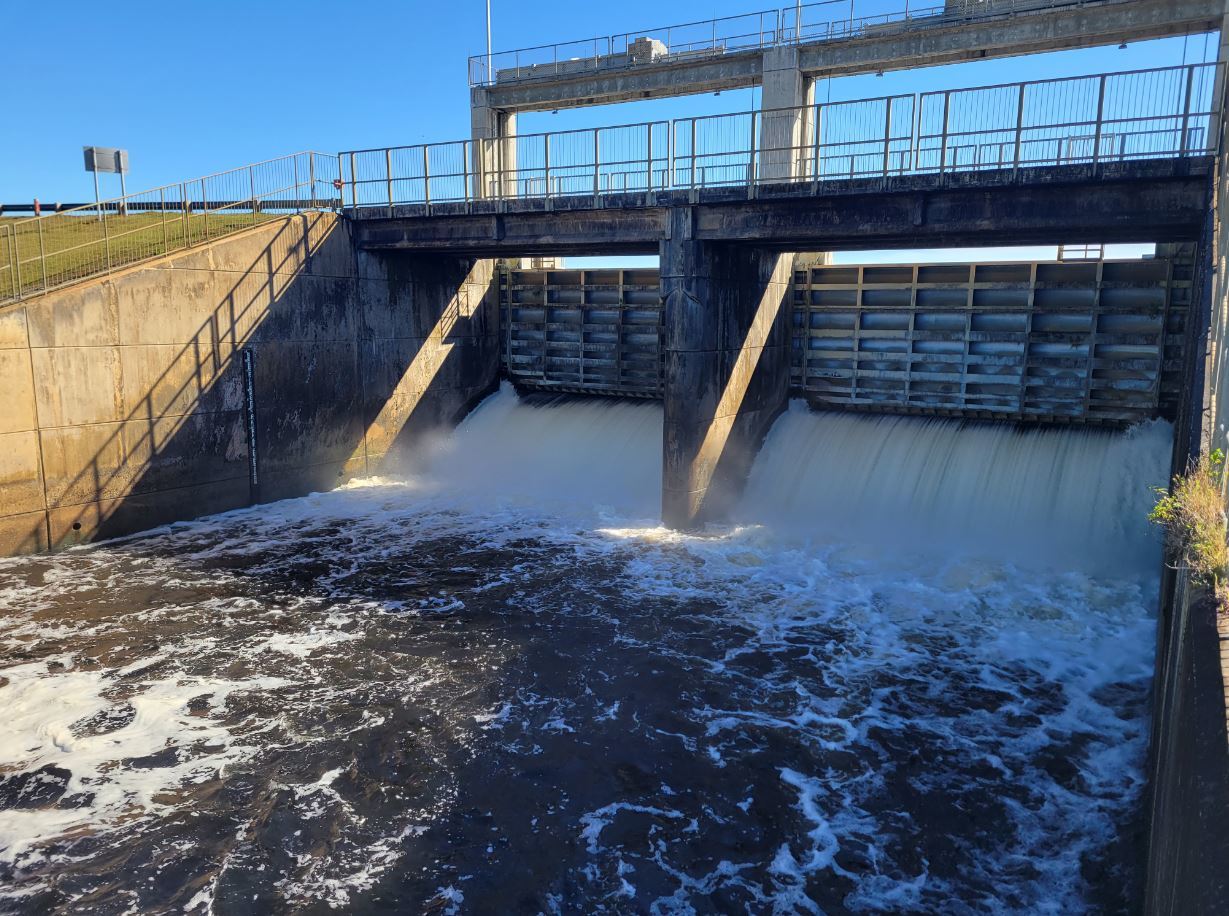
- This time of year, all flows exiting Lake Rousseau typically pass through the Inglis Bypass Spillway to the Lower Withlacoochee River.
- In early July, the Bypass Spillway reached its capacity, prompting the opening of the Inglis Main Dam.
- The Inglis Bypass Spillway is still flowing at capacity, providing over 900 million gallons of freshwater per day to the tidally influenced Lower Withlacoochee River.
- The Inglis Main Dam (see photo above) also remains open, discharging excess flows from Lake Rousseau to the Barge Canal and into the Gulf of Mexico.
- Our MFL staff continue to collect data to support the Lower Withlacoochee River study which will evaluate effects on the river’s ecology based on future groundwater withdrawals.

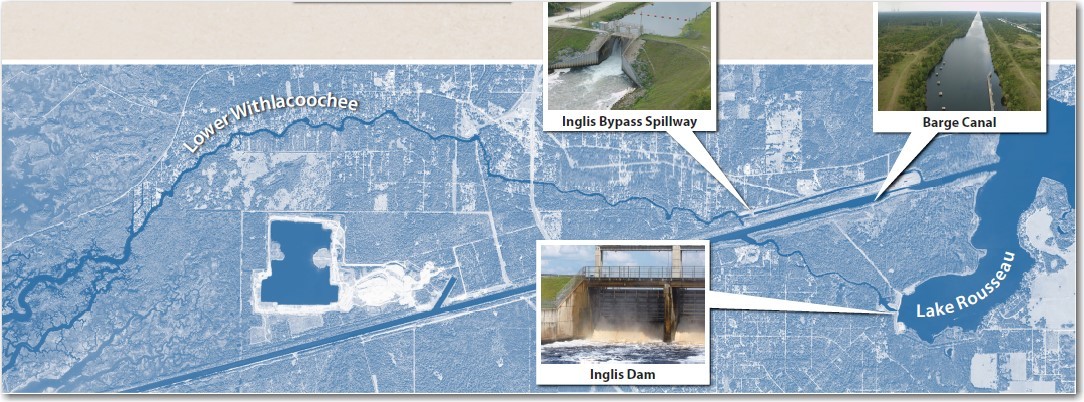
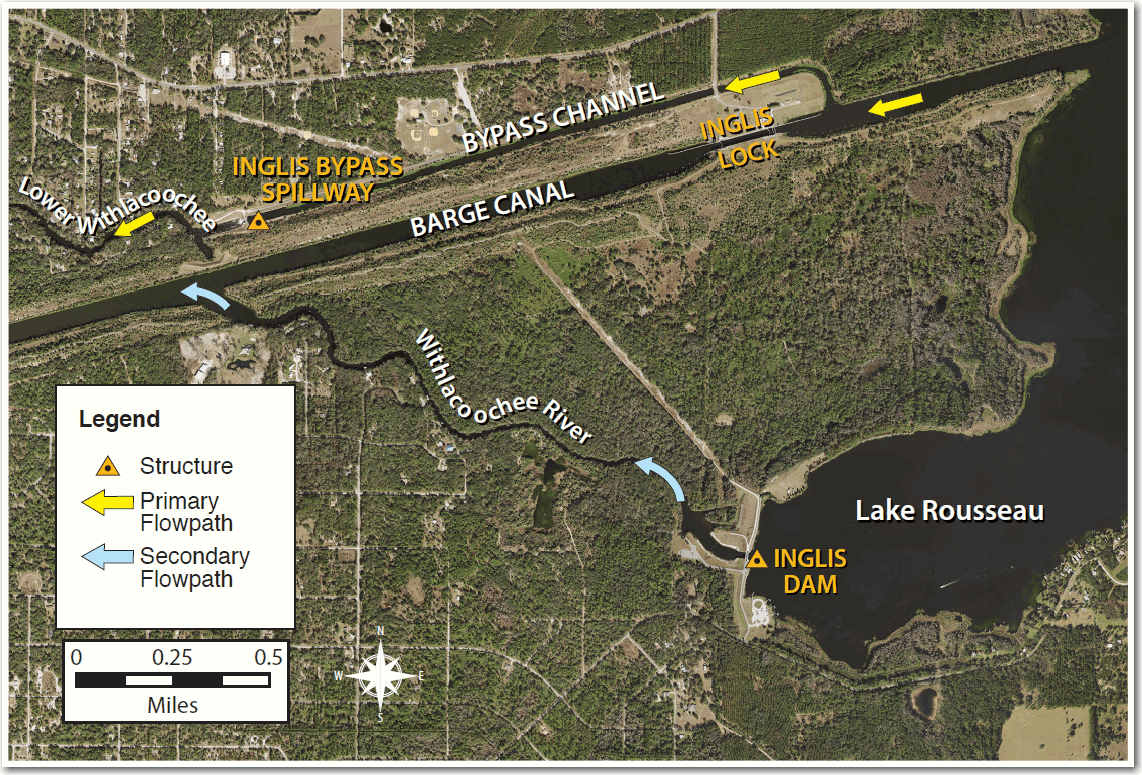
Have a great December and a Merry Christmas!
Mark
Mark Fulkerson, Ph.D., P.E.
Chief Professional Engineer
Water Resources Bureau
Southwest Florida Water Management District
(352) 796-7211, ext. 4410
(800) 423-1476 (FL only)
(352) 279-4493 (cell)

